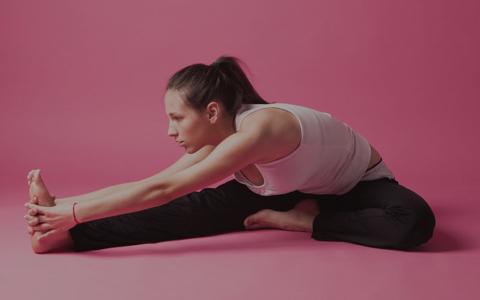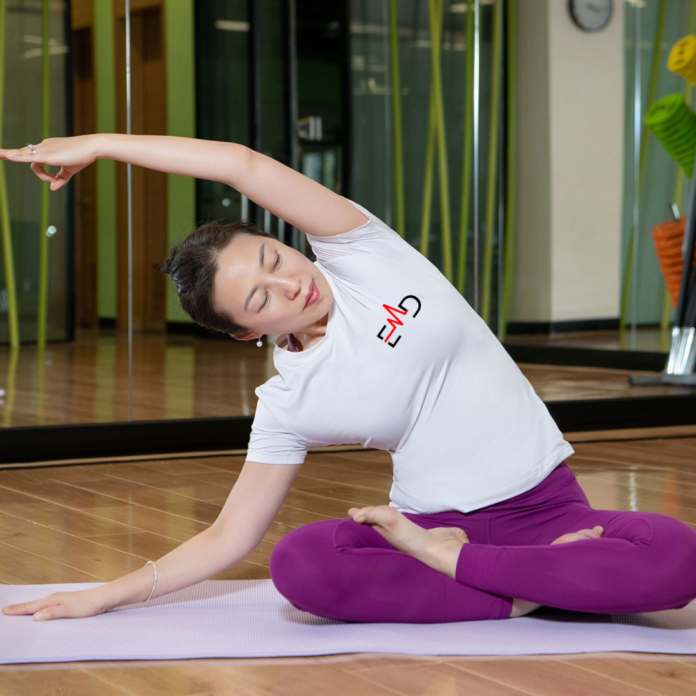Exercise Daily – In the realm of fitness, strength and endurance often take center stage, garnering the lion’s share of attention. However, flexibility and balance are two often overlooked yet crucial components of a well-rounded fitness plan. Just as a sturdy foundation supports a strong building, flexibility and balance lay the groundwork for a healthy, injury-resistant, and enjoyable fitness journey.
The Significance of Flexibility in Fitness
Flexibility refers to the ability of your joints to move through their full range of motion without restriction. It’s like having well-oiled hinges that allow your body to move gracefully and efficiently. Enhanced flexibility comes with a host of benefits that elevate your overall fitness:
Enhanced Range of Motion: With increased flexibility, you can perform movements with greater ease and depth, allowing you to reach new levels in your workouts and everyday activities.
Improved Injury Prevention: Flexible muscles and tendons are less prone to strains and tears, reducing the risk of injuries that can derail your fitness progress.
Reduced Muscle Soreness: Stretching helps to remove lactic acid buildup in muscles, alleviating post-workout soreness and promoting faster recovery.
Enhanced Posture and Body Alignment: Good flexibility contributes to proper posture, reducing strain on your joints and improving your overall physical well-being.
The Importance of Balance in Fitness
Balance is maintaining your equilibrium and stability while moving or standing. It’s like having a gyroscope that keeps you steady and grounded. Robust balance enhances your fitness in several ways:
Enhanced Stability and Coordination: Improved balance allows for better control over your body movements, enhancing your performance in sports, dance, and everyday activities.
Improved Fall Prevention: Balance becomes increasingly important as we age, reducing the risk of falls and associated injuries.
Boosted Confidence and Enjoyment in Physical Activities: When you feel confident in your balance, you’re more likely to engage in physical activities, increasing enjoyment and overall fitness.
Incorporating Flexibility and Balance into Your Fitness Routine
Integrating flexibility and balance exercises into your fitness routine is essential for maximizing your results and minimizing injury risk. Here are some effective strategies:

Dynamic Stretching for Warm-up
Dynamic stretching involves active movements that prepare your muscles for the upcoming workout. It’s like warming up a car engine before driving.
Benefits of Dynamic Stretching:
- Increases blood flow to muscles
- Improves range of motion
- Enhances neuromuscular coordination
Effective Dynamic Stretches:
- Arm circles
- Leg swings
- Torso twists
- High knees
- Butt kicks
Static Stretching for Cooldown
Static stretching involves holding stretches in a relaxed position for an extended period, typically 30-60 seconds. It’s like giving your muscles a cooldown massage after a workout.
Advantages of Static Stretching:
- Enhances muscle flexibility
- Reduces muscle tension
- Improves circulation
- Promotes relaxation
Recommended Static Stretches:
- Hamstring stretch
- Quadriceps stretch
- Calf stretch
- Gluteus stretch
- Backstretch
- Chest stretch
Balance Exercises for Enhanced Stability
Regular balance exercises challenge your proprioception, the ability to sense your body’s position and movement in space. These exercises can be incorporated into your workout routine or done as a standalone session.
Single-leg Stances:
- Stand on one leg for 30-60 seconds, maintaining balance and control.
- Switch legs and repeat.
Tandem Stance:
- Place one foot directly in front of the other, heel to toe.
- Maintain balance and control for 30-60 seconds.
- Repeat with the other leg in front.
Heel-to-Toe Walk:
- Walk slowly, placing your heel first and bringing your toes to meet the heel.
- Maintain balance and control as you walk.
Balance on Unstable Surfaces:
- Try balancing on a wobbleboard, cushion, or folded towel.
- Start with short periods and gradually increase the duration.

Lifestyle Habits that Promote Flexibility and Balance
While targeted exercises are crucial, lifestyle habits play a significant role in maintaining flexibility and balance.
Regular Exercise:
- Aim for at least 150 minutes of moderate-intensity aerobic exercise per week.
- Incorporate flexibility and balance exercises into your workouts.
- For overall fitness, engage in cross-training activities, such as swimming, yoga, or Pilates.
Proper Hydration:
- Maintain adequate fluid intake throughout the day to keep your muscles and joints hydrated and supple.
- Drink water before, during, and after exercise to promote recovery and flexibility.
Adequate Sleep:
- Sleep plays a vital role in muscle repair and recovery, contributing to flexibility.
- Aim for 7-8 hours of quality sleep each night to support overall physical well-being.
Mindful Movement Practices:
- Engage in activities that promote mindfulness and body awareness, such as yoga, tai chi, or meditative walking.
- These practices enhance proprioception and improve balance while reducing stress and anxiety.
Tips for Flexibility and Balance
Flexibility Tips:
-
Incorporate dynamic stretching into your warm-up: Dynamic stretching involves active movements that prepare your muscles for the upcoming workout. It helps to increase blood flow, improve range of motion, and enhance neuromuscular coordination.
-
Practice static stretching regularly: Static stretching involves holding stretches in a relaxed position for an extended period, typically 30-60 seconds. It helps to enhance muscle flexibility, reduce muscle tension, improve circulation, and promote relaxation.
-
Focus on key muscle groups: Pay particular attention to stretching your major muscles, such as hamstrings, quadriceps, calves, glutes, back, and chest.
-
Listen to your body: Avoid overstretching or pushing yourself to the point of pain. If you feel pain, ease off the stretch.
-
Be consistent: Aim to stretch at least three times per week for optimal results.
-
Consider using stretching aids: Props like yoga straps or foam rollers can help you achieve deeper stretches and improve flexibility.
Balance Tips:
-
Incorporate balance exercises into your routine: Balance exercises challenge your proprioception, the ability to sense your body’s position and movement in space. These exercises can be incorporated into your workout routine or done as a standalone session.
-
Practice single-leg stances: Stand on one leg for 30-60 seconds, maintaining balance and control. Switch legs and repeat.
-
Try the tandem stance: Place one foot directly in front of the other, heel to toe. Maintain balance and control for 30-60 seconds. Repeat with the other leg in front.
-
Challenge yourself with heel-to-toe walking: Walk slowly, placing your heel down first and bringing your toes to meet the heel. Maintain balance and control as you walk.
-
Incorporate unstable surfaces: Try balancing on a wobble board, balance cushion, or a folded towel. Start with short periods and gradually increase the duration.
-
Practice mindfulness: Activities like yoga, tai chi, and meditative walking can help improve proprioception and balance while reducing stress and anxiety.
-
Strengthen your core: A strong core provides a stable foundation for balance. Engage in exercises like planks, crunches, and side planks to strengthen your core muscles.
-
Wear supportive footwear: Proper footwear can help improve stability and reduce the risk of falls. Choose shoes with good traction and supportive soles.
-
Be mindful of your surroundings: Avoid distractions and potential hazards when practicing balance exercises.
-
Seek professional guidance if needed: Consult a fitness professional or physical therapist for personalized guidance if you have concerns about your balance or flexibility.

Conclusion
Flexibility and balance are not just afterthoughts in fitness but essential components of a well-rounded fitness plan. Incorporating flexibility and balance exercises into your routine and adopting healthy lifestyle habits can enhance your range of motion, improve stability, reduce injury risk, boost confidence, and help you enjoy a more fulfilling fitness journey. Embrace flexibility and balance, and watch your fitness soar to new heights.
FAQs – Flexibility and Balance: A Dynamic Duo for Fitness Success
Q: How often should I do flexibility and balance exercises?
A: Aim to incorporate flexibility and balance exercises into your routine at least 2-3 times weekly. You can do them during your warm-up, cooldown, or standalone session.
Q: What signs do I need to improve my flexibility?
A: If you experience stiffness, tightness, or pain in your joints, it could indicate a need for improved flexibility. Additionally, if you find it difficult to perform everyday activities, such as reaching overhead or bending down, flexibility exercises can help.
Q: What are some tips for improving my balance?
A: Start slowly and gradually increase the difficulty of balance exercises as you improve. Focus on maintaining good posture and core engagement throughout the exercises. Practice regularly to see noticeable improvements in your balance.
Q: Are there any specific types of exercises that are particularly beneficial for flexibility and balance?
A: Yoga, tai chi, and Pilates are excellent choices for improving flexibility and balance. These mind-body practices combine stretching, strengthening, and controlled movements, promoting overall body awareness and coordination.
Q: How can I incorporate flexibility and balance exercises into my busy lifestyle?
A: Look for opportunities to sneak in flexibility and balance exercises throughout your day. For instance, do arm circles while waiting for the kettle to boil or practice single-leg stances while brushing your teeth. Every little bit counts!
Q: What are some tips for stretching safely?
Here are some tips for stretching safely:
- Warm up your muscles before you stretch. You can do this by lightly jogging, jumping jacks, or doing dynamic stretches.
- Breathe deeply and evenly as you stretch.
- Don’t bounce or force your stretch. You should feel a comfortable stretch, but you should not feel pain.
- Hold each stretch for 30-60 seconds.
- Modify your stretches as needed. If you have any injuries, it is important to modify your stretches or avoid them altogether.
Q: What are some balance exercises I can do at home?
Here are some balance exercises you can do at home:
- Single-leg stance: Stand on one leg for 30-60 seconds, maintaining balance and control. Switch legs and repeat.
- Tandem stance: Place one foot directly in front of the other, heel to toe. Maintain balance and control for 30-60 seconds. Repeat with the other leg in front.
- Heel-to-toe walk: Walk slowly, placing your heel first and bringing your toes to meet the heel. Maintain balance and control as you walk.
- Balance on unstable surfaces: Try balancing on a wobble board, balance cushion, or a folded towel. Start with short periods and gradually increase the duration.
Q: What lifestyle habits can help me improve my flexibility and balance?
Here are some lifestyle habits that can help you improve your flexibility and balance:
- Get regular exercise. Aim for at least 150 minutes of moderate-intensity aerobic exercise per week.
- Stay hydrated. Drink plenty of water daily to keep your muscles and joints hydrated.
- Get enough sleep. Sleep is essential for muscle repair and recovery, which contributes to flexibility.
- Practice mindfulness. Activities like yoga, tai chi, and meditative walking can help improve your proprioception and balance.






